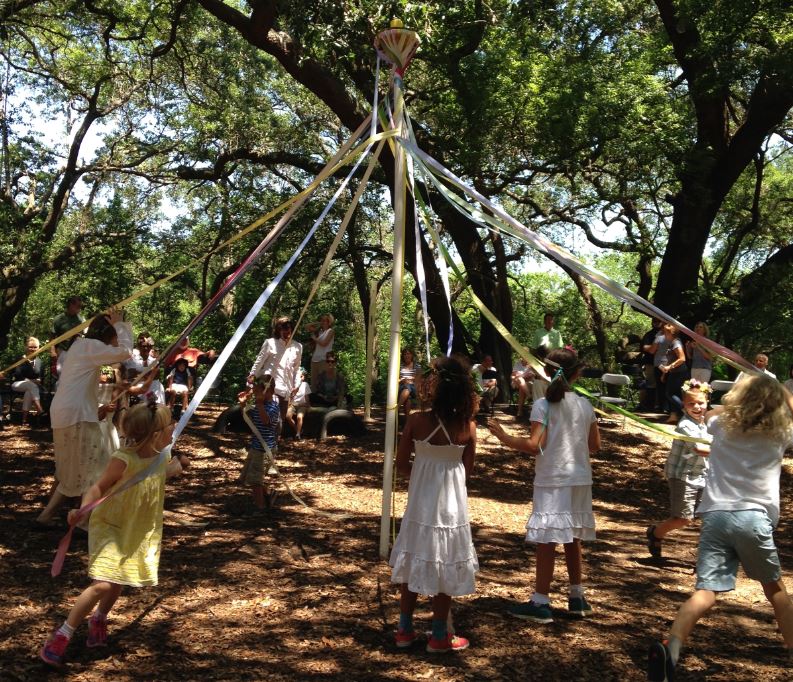
This is the latest post in our series on the diverse roots of school choice.
If the Suncoast Waldorf School in Palm Harbor, Fla. is part of a right-wing plot, it’s good at hiding it. Its students cultivate a “food forest.” Its teachers encourage them to stomp in puddles. Its parents sign a consent form that says, I give permission for my child, named above, to climb trees on the school grounds …
And yet, the unassuming, apolitical little school is solidly school choice. Sixteen of its 60 students in grades K-8 last year used tax credit scholarships to help defray the $10,000 annual tuition. And to those familiar with the century-old vision that spawned the Waldorf model – a vision whose first beneficiaries were the children of cigarette factory workers – there’s nothing unusual about it.
School choice scholarships make Waldorf “more accessible to a diverse group of families,” said Barbara Bedingfield, the school’s co-founder. “This is what we want.”
“Alternative schools” like those in the 1,000-strong Waldorf network help upend myths about choice being hard right. This small but thriving corner of the education universe is especially resistant to labels, but there is a nexus between many of these schools and ‘60s-era, counter-culture reformers like John Holt (think “unschooling”) and Paul Goodman (think “compulsory miseducation”).
“Thirty-plus years ago, school choice was almost entirely a cause of the left,” is how writer Peter Schrag described it in 2001, writing for The American Prospect. “In the heady days of the 1960s, radical reformers looked toward the open, child-centered schools that critics like Herb Kohl, Jules Henry, Edgar Friedenberg, Paul Goodman, and John Holt dreamed about. Implicitly, their argument had the advantage of celebrating American diversity and thus obviating our chronic doctrinal disputes about what schools should or shouldn’t teach.”
Then and now, the contrarian outlooks of this species of ed reformer are often libertarian and left, both embracing of “progressive” goals and distrustful of government’s ability to deliver. Generally speaking, they aren’t fond of government-dictated standards, testing, grading, grade-level configurations or anything else subject to imposed uniformity. But they are willing to consider the potential of tools like vouchers to give parents the power to choose schools that synch with their values.
Suncoast Waldorf sits on two acres of live oaks, a leafy oasis off a busy road in Florida’s most urbanized county. It blossomed 17 years ago, just as the Sunshine State began blazing trails on the school choice frontier.
To help children grow into independent, compassionate adults, it emphasizes art, a reverence for the natural world, a do-it-yourself resourcefulness. Standardized testing is out (except for what’s required by state law for the scholarship program). So are letter grades and iPads. So is Common Core.
On the flip side, here’s what’s in: Classical mythology and religious studies. Musical instruments and foreign languages. And recess, twice a day. Teachers “loop” with the same students from first to fifth grade. Subjects are taught in 4-to-6 week blocks. Class sizes average 10.
“When we say we want to educate the whole child, we mean it,” Bedingfield said.
Like her school, Bedingfield is tough to label. She taught in public schools and in the Peace Corps, but left teaching to sell transistors and integrated circuits. She didn’t stumble on Waldorf until later in life, but was so smitten she underwent specialized Waldorf training at the age of 53.
Plenty of parents fall for Waldorf, too, with diverse backgrounds and myriad motivations.
One parent who uses tax credit scholarships to send her two children to the school said they were previously enrolled in public schools, including one with a highly regarded IB program. She liked the rigor, but hated the pacing, fearing her kids would “burn out.” Another parent of a scholarship student said her neighborhood public school put her daughter, then struggling with reading in kindergarten, into a class for students with behavioral problems. She didn’t think Waldorf was possible until a Catholic school told her about the tax credit scholarship. “I don’t see any political agenda to it,” she said about choice. “You just want the best for your kid.”
Government-supported choice carries tensions for many private schools, and alternative schools are no exception. In a 2009 report, the Association of Waldorf Schools of North America said the growing number of voucher and tax credit scholarship programs could “inaugurate a new era of educational freedom”— unless they came with too many regulatory strings.
“Such school choice legislation would then be an instrument to create an oppressive uniform national education system controlled by the state and federal governments,” the report said, “which in turn are heavily influenced by major corporate interests.”
For now, in Waldorf’s view, the pros outweigh the cons. And in states like Florida, with thriving school choice programs, parents are grateful.
Melissa Manning, whose 8-year-old daughter Kiraskye uses a tax credit scholarship at Suncoast Waldorf, described her politics as “extremely left.” She’s vegan, works at a grocery called the Nature’s Food Patch and has never owned a TV. She said she appreciated that Suncoast Waldorf is “nurturing” and “one big family” and that Kiraskye is learning practical skills like growing and cooking her own food.
Maybe that isn’t what some parents want for their child, Manning said. But it’s what she wants for hers.
“We have to honor the fact,” she said, “that people are different.”
Full disclosure: I work for Step Up For Students, which hosts this blog and helps administer Florida’s tax credit scholarship program, the largest private school choice program in the nation, and the state’s Personal Learning Scholarship Accounts program, its education savings accounts for students with special needs.



We are the ecstatic recipients of the Step Up scholarship. My child now attends Suncoast Waldorf, which has infused his life with meaningful experiences and reconnected him with what childhood is supposed to be: organic growth, not a prescribed script. It has also fundamentally changed the entire family dynamic as we are now part of a community. It is true that it costs more to provide children with beeswax instead of worksheets or to have small student to teacher ratios, but there are other measures that public schools could implement free of cost, which honor children’s needs and can go a long way towards enhancing the educational experience, for example: start the day with outdoor play time; allow the children to use slippers or grippy socks instead of shoes when working in doors, provide chamomile or ginger tea if someone doesn’t feel well, and avoid homework until later in grade school. Basically, help children love school! Thank you Step Up and Suncoast Waldorf for showing us there is another more compassionate, effective way to educate our children.
Hi Karina, thanks so much for taking time out for that comment. I and many others are grateful to Waldorf for the diversity it adds to the education landscape, and grateful that it is among the 1,500 schools in Florida that participate in the tax credit scholarship program. It not only provides a high-quality alternative, it gives a broader group of parents access to that alternative. How good is that?! 🙂